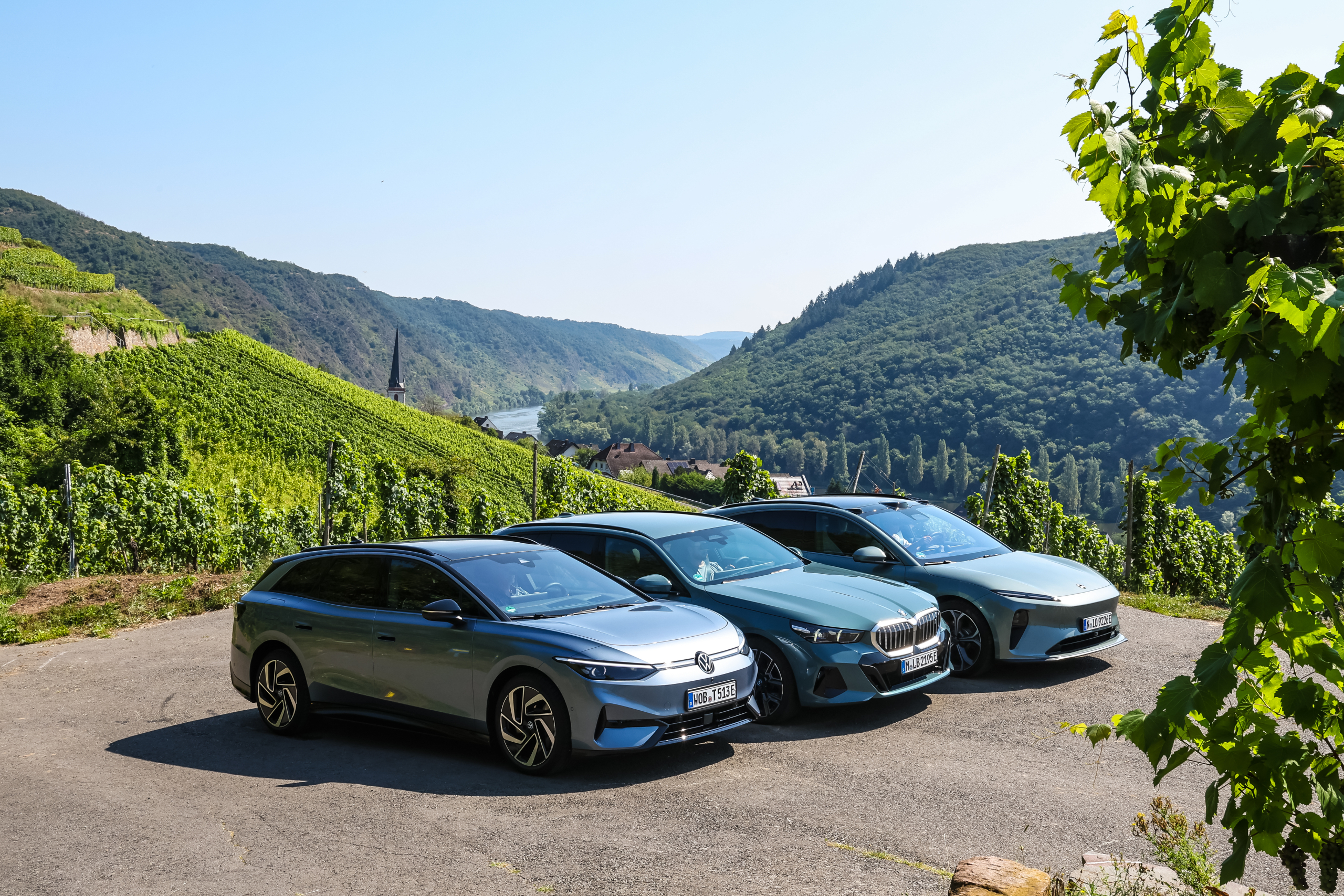We test the real range, practical consumption and the performance and driving characteristics of three electric station wagons: the BMW i5 Touring, Nio ET5 Touring and Volkswagen ID.7 Tourer.
The power of the three test cars varies considerably, with the Nio ET5 Touring as the big winner. The Volkswagen ID.7 Tourer keeps it at 286 hp, the ET5 has no less than 204 hp more. The BMW is in between with 340 hp. While the two German station wagons have rear-wheel drive, the Nio has an electric motor on both axles and therefore four-wheel drive. The whole thing ensures a flaming performance. The Nio reaches 100 km/h in just 3.9 seconds. Even above that speed, the Germans are unable to get alongside.


Nio ET5 Touring consumption
But the Nio’s power consumption is quite high, so its battery runs out the fastest. It compensates for this with the largest battery capacity. During our standard round and also on the economy track, the Nio performs about the same as the BMW. During the first lap, the ET5 consumes 19.8 kWh per 100 km, while the i5 scores 19.1 kWh, even falling below its WLTP score.
On the economical lap, the i5 achieves a consumption of 16.9 kWh, which is 0.2 kWh higher than the consumption of the Nio. The most economical car is by far the ID.7, with a test consumption of 17.8 kWh/100 km. During the economy drive it does 15.4 kWh/100 km.
Volkswagen ID.7 Tourer real range
The fact that the ID.7 does not have an impressive range is because it has the smallest battery pack. The Volkswagen squeezes a range of 432 kilometers from a capacity of 77 kWh. The BMW can travel 425 kilometers with its 81.2 kWh battery, while the Nio’s 91 kWh battery only needs to be charged after 460 kilometers.
A free test in your inbox every week? Then our free newsletter is for you!
You don’t have to worry about long charging breaks with all three. The Volkswagen charges at the fast charger with a maximum of 175 kW, the BMW even with 205 kW. The Nio also does well with 180 kW. But the loading curve is not as consistent as that of the Germans; it quickly drops below 100 kW. In addition, during the highway test, vibrations from the drive unit occurred repeatedly and for no apparent reason, accompanied by a clearly audible hum. These disappeared on their own after a few minutes. This can of course be exemplary, so we don’t take it too seriously.


BMW i5 Touring is the sportiest
The Nio was doing well, but its driving characteristics still let it down. The steering lacks any feeling and you also have to adjust a little on the highway, so it takes some concentration to stay in your lane. This is quite tiring on long distances. The Nio also does not excel in dynamics in other areas, contrary to what the sporty design suggests. With an empty weight of 2264 kilograms, the Nio is the heaviest test candidate, it steers slowly and reaches its grip limit earlier than the other two.

Although the ET5 Touring achieves excellent results on the standard brake test with cold and hot brakes, it does not pass the stress test on the handling circuit. There the brakes are pushed to their limits, and the ESP proves to be vigilant like a secret agent. The system cannot be switched off, intervenes roughly and does not always respond predictably. As a result, the braking system reaches its limit after just one fast lap. In addition, the back breaks out quickly.


ID.7 also doesn’t make much of an effort
Consolation for Nio: the ET5 is not alone in its mediocre rating. The Volkswagen ID.7 also doesn’t do much on the track. Even not turning in too sharply is enough to throw the rear of the car out of balance. The German ESP is vigilant, but not subservient. It intervenes roughly and sometimes a little late. Yet the ID.7 achieves the shortest cold braking distance from 100 km/h at 34.6 meters.
Of BMW i5 Touring is the smiling third: despite its length of 5.06 meters, the station wagon is dynamic and safe. The i5 steers with considerably more feeling than the Nio and the Volkswagen, which makes much higher cornering speeds possible. The chassis remains neutral and cornering traction is impressive. With an admirably short braking distance of 32.8 meters with warm brakes, the optional M Sport braking system also proves its added value. The BMW i5 Touring has no problem with its opponents in this chapter.
You can read the full test Auto Review 11, which is in stores now. You can also order it in the webshop.
Source: www.autoreview.nl



